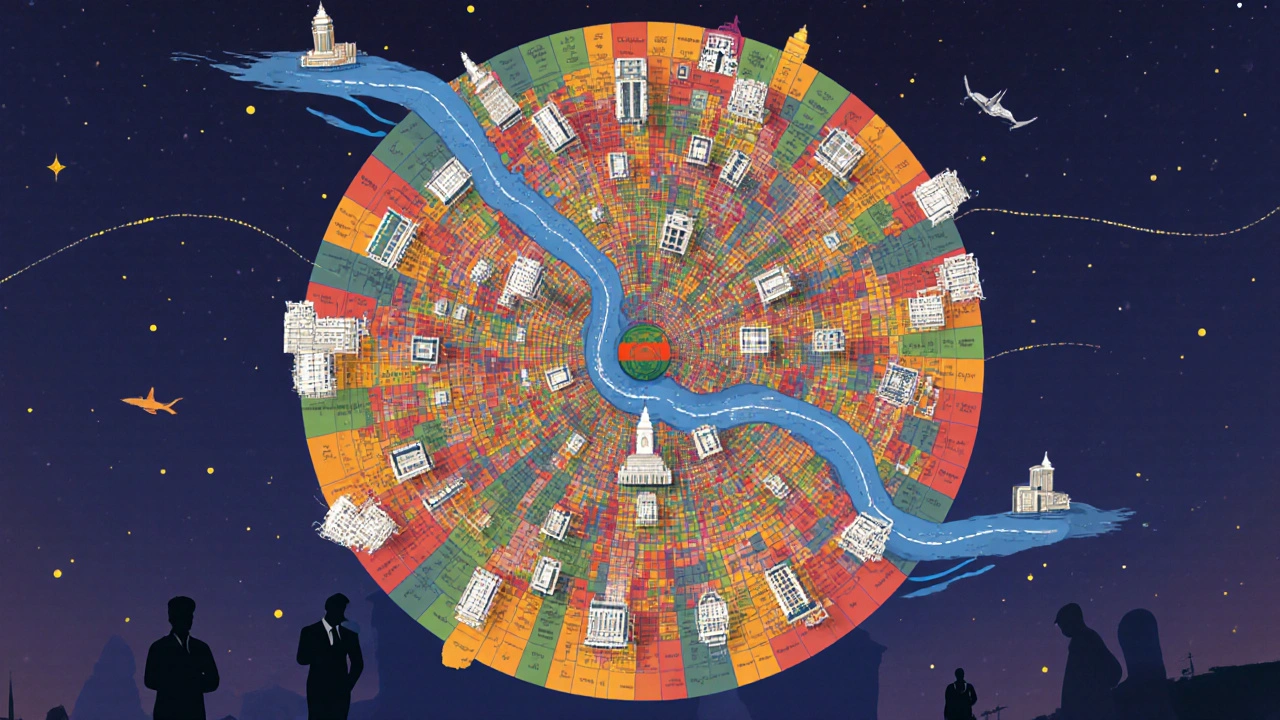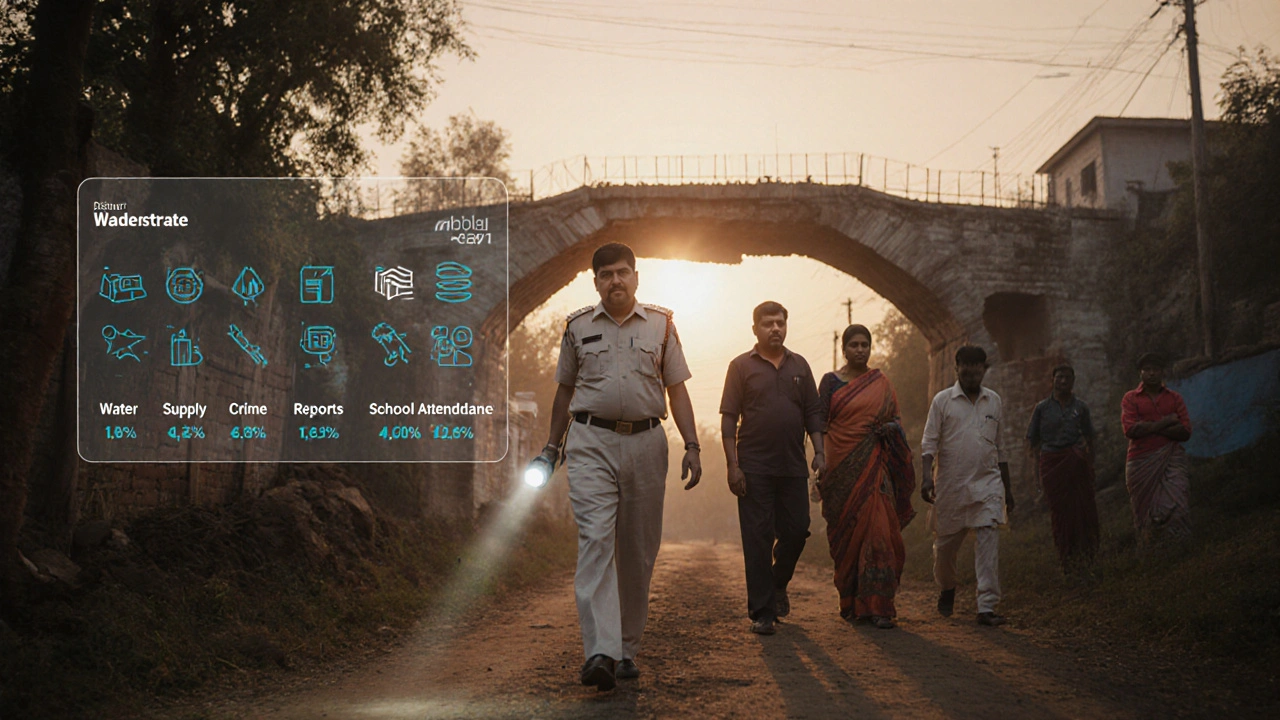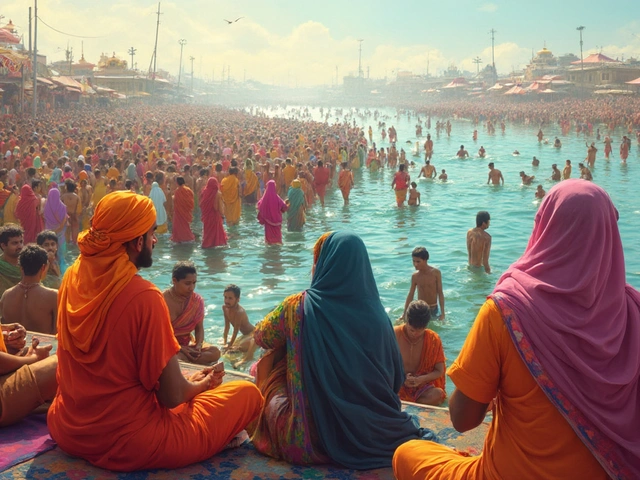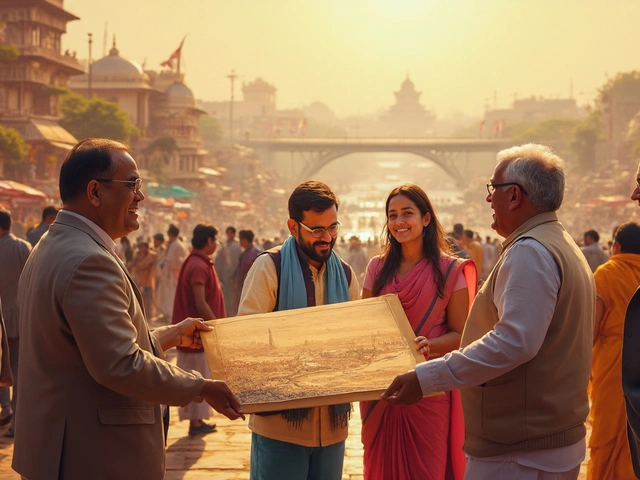How Many DM in UP? Understanding Districts in Uttar Pradesh
People often ask, How many DM in UP? - short for how many district magistrates in Uttar Pradesh. The answer isn’t just a number. It’s about how the state is run, who makes decisions on the ground, and why Prayagraj matters in that system.
What Is a District Magistrate?
A District Magistrate (DM) is the top-ranking government officer in each district of Uttar Pradesh. They’re not just bureaucrats - they’re the ones who handle law and order, land records, elections, disaster response, and even public welfare programs. Think of them as the mayor, sheriff, and county administrator rolled into one, but with far more power.In Uttar Pradesh, every one of its 75 districts has its own DM. That means there are exactly 75 District Magistrates in UP. Each DM is an Indian Administrative Service (IAS) officer, usually with 8-12 years of service. They report to the state government but operate with a lot of autonomy in their district.
Why Prayagraj Has a Special DM
Prayagraj - formerly known as Allahabad - is one of the most important districts in Uttar Pradesh. It’s not just a city. It’s a religious, historical, and administrative hub. The Kumbh Mela, which draws over 100 million people every 12 years, is managed by the Prayagraj DM’s office. That’s more people than live in most countries.The DM of Prayagraj doesn’t just manage traffic or water supply. They coordinate with police, paramilitary forces, the railways, and even the central government during major events. During the 2019 Kumbh Mela, the Prayagraj DM oversaw 300,000 security personnel, 500 temporary hospitals, and 1.2 million temporary toilets. That’s not typical district work - it’s a national operation.
How Districts Are Organized in UP
Uttar Pradesh is divided into 18 divisions, and each division contains 4 to 6 districts. Prayagraj is part of the Prayagraj Division, which also includes districts like Kaushambi, Fatehpur, and Allahabad (the old name still lingers in some records).Each division is headed by a Divisional Commissioner - a senior IAS officer who supervises the DMs in their area. But the DM still answers directly to the state government in Lucknow. This two-tier system helps manage the massive scale of UP, which has more people than Brazil.
Here’s how the 75 districts break down by region:
- Western UP: 20 districts including Meerut, Ghaziabad, Agra
- Eastern UP: 19 districts including Varanasi, Gorakhpur, Azamgarh
- Central UP: 17 districts including Lucknow, Kanpur, Prayagraj
- Southern UP: 11 districts including Jhansi, Jalaun, Jalaun
- Northwestern UP: 8 districts including Saharanpur, Muzaffarnagar
- Far Eastern UP: 10 districts including Basti, Sant Kabir Nagar
Prayagraj sits right in the center - geographically and politically. It’s where the Ganges and Yamuna rivers meet, and where state policies often get tested first.

Who Appoints the DM?
The DM isn’t elected. They’re appointed by the Uttar Pradesh Public Service Commission (UPPSC), based on performance in the civil services exam and seniority. The state government then assigns them to a district. Transfers happen every 2-4 years, depending on performance and political needs.Some DMs stay in the same district for their entire career. Others move fast - from a rural district like Balrampur to a metro like Noida. Prayagraj is often seen as a stepping stone. Many future chief secretaries and even cabinet ministers started as DMs here.
What Does a DM Actually Do Day to Day?
A DM’s schedule doesn’t look like a desk job. Here’s a typical week:- Monday: Review crime reports with the Superintendent of Police
- Tuesday: Visit a village to check on ration distribution or clean water access
- Wednesday: Attend a land dispute hearing - these can involve hundreds of families
- Thursday: Inspect a school or hospital under the state’s welfare scheme
- Friday: Meet with local business owners about tax compliance or licensing
- Saturday: Emergency response drill - flood, fire, or protest
- Sunday: Off, but always on call
They don’t just sit in offices. They walk through slums, sit on village grounds, and sometimes sleep in temporary camps during emergencies. In 2023, the DM of Etawah personally led a rescue operation after a bridge collapsed during monsoon rains - saving 17 lives.
Why the Number Matters
Knowing there are 75 DMs in UP isn’t trivia. It shows how deeply the state is organized. Each DM is responsible for around 3-5 million people. That’s the population of a small country. No single person can manage that alone - so each DM has a team of 100-300 subordinate officers, clerks, and field staff.The system works because it’s decentralized. If a road collapses in Gorakhpur, the DM there handles it. If a protest breaks out in Meerut, the local DM coordinates with police. There’s no waiting for Lucknow to send orders. That’s why Uttar Pradesh, despite its size and complexity, doesn’t collapse under its own weight.

Common Misconceptions
People often think DMs are just paper-pushers or political appointees. That’s not true. While politics can influence transfers, the core duties - law enforcement, disaster management, public service delivery - are handled by career officers with real expertise.Another myth: “Prayagraj is just a religious city.” But its DM’s office handles more revenue collection than most state capitals. It processes land records for over 1.2 million properties and runs one of the largest voter registration systems in India.
And no, DMs don’t have the same power as a mayor. Mayors manage cities. DMs manage entire districts - including villages, towns, and forests. Prayagraj district isn’t just the city. It’s 5,000 square kilometers of land, 5,000 villages, and over 7 million people.
What’s Changing in UP’s District System?
In 2024, the Uttar Pradesh government announced the creation of 12 new districts - but only 5 were approved by mid-2025. These include areas like Bhadohi, Chitrakoot, and Shahjahanpur. That would bring the total to 80 DMs by early 2026.Why? Because population growth and administrative overload made some districts too big to manage. For example, the old Azamgarh district had 5.3 million people - more than Austria. Now it’s split into Azamgarh and Mau. Each new DM gets a smaller, more manageable area.
Prayagraj isn’t getting split - it’s too central. But its DM now works with a digital dashboard that links directly to 1,200 village-level offices. Real-time data on water supply, school attendance, and crime reports now flow in hourly.
Final Answer: How Many DM in UP?
As of November 2025, there are 75 District Magistrates in Uttar Pradesh. That number will rise to 80 once the new districts are fully operational. Each one is a linchpin in a system that keeps a state of 240 million people running.Prayagraj’s DM doesn’t just manage a city. They manage history, faith, and the daily lives of millions. That’s why asking “how many DM in UP?” isn’t about counting titles. It’s about understanding how power, responsibility, and service work on the ground in India’s largest state.
Is a DM the same as a collector?
Yes. In Uttar Pradesh, District Magistrate (DM) and District Collector are the same person. The title "Collector" comes from their role in collecting land revenue, while "District Magistrate" refers to their judicial and law enforcement powers. Both titles are used interchangeably.
Can a DM arrest someone?
A DM doesn’t make arrests themselves, but they have the legal authority to order police to arrest anyone under the Code of Criminal Procedure. They can also issue detention orders under preventive laws, especially during riots or public emergencies.
How do I contact my local DM in UP?
You can visit the district headquarters in person, usually located in the district capital. Most DM offices have public grievance counters open Monday to Friday. You can also file complaints online through the UP government’s e-district portal. For urgent matters like natural disasters, call the district control room - the DM’s office is always on call.
Do all districts in UP have the same population?
No. Districts range from 1.8 million people (like Shravasti) to over 5.5 million (like Ghaziabad). Prayagraj has around 7 million. The government tries to balance size, but geography and history often make some districts larger than others.
What happens if a DM is corrupt?
Corruption cases against DMs are investigated by the Uttar Pradesh Lokayukta or the Central Bureau of Investigation (CBI). Because they’re IAS officers, they’re protected by strict service rules, but they can be suspended, transferred, or even dismissed. Over the last five years, 11 DMs in UP were removed for misconduct.






8 Comments
Chris Heffron
November 7 202575 DMs? That’s a lot. But honestly, I didn’t realize how much power one person has over a district. I thought mayors ran things, not some IAS officer with a badge and a laptop. 😅
Sandy Dog
November 8 2025Okay but imagine being the DM of Prayagraj during Kumbh Mela. 300k security personnel? 1.2 million toilets?! I can’t even coordinate a birthday party without someone crying over the cake flavor. This person is basically a superhero with a government ID. 🦸♂️💥
Adrienne Temple
November 10 2025That’s actually really cool how decentralized it is. I grew up in a place where everything went through one county office and it took months to fix a pothole. Here, if a bridge collapses in Etawah, the DM is already there with a rescue team. No red tape, just action. 👏
Also, love that they walk through slums and sleep in camps. That’s leadership, not bureaucracy.
Tom Mikota
November 11 2025Wait - so a DM can order arrests but doesn’t make them? That’s like having a CEO who can fire people but never says ‘you’re fired’ themselves. Just… signs a form and walks away. Classic bureaucratic magic. 😏
Amanda Harkins
November 12 202575 sounds like a lot until you realize each one handles 5 million people. That’s like being the mayor of 15 New York Cities at once. And people think local government is easy? Nah. This is endurance sport with a salary.
Aaron Elliott
November 13 2025One must question the epistemological underpinnings of administrative decentralization in post-colonial states. The DM, as a technocratic agent, functions not as a representative of the populace, but as a conduit of state sovereignty - a vestige of British Raj bureaucracy repurposed under democratic formalism. The illusion of proximity is maintained through performative field visits, while structural power remains centralized in Lucknow’s corridors. One might ask: Is the DM a servant of the people, or a disciplined instrument of the apparatus? The answer, perhaps, lies not in the number - 75 - but in the silence of the governed.
Nick Rios
November 15 2025I get why people think DMs are just paper-pushers. But after reading this, I see how much real human impact they have - saving lives after bridge collapses, managing millions during festivals, making sure kids get clean water. It’s not glamorous, but it’s necessary. We should respect this work more.
Jeanie Watson
November 16 2025They’re adding 5 more districts? Cool. So now we’ll have 80 DMs. And someone’s gonna have to update all the Wikipedia pages. Someone’s gonna have to retrain all the GPS apps. Someone’s gonna have to explain to tourists why ‘Allahabad’ is now ‘Prayagraj’ and also why there’s a new district called ‘Bhadohi’ that wasn’t on their map last year. 🤦♀️